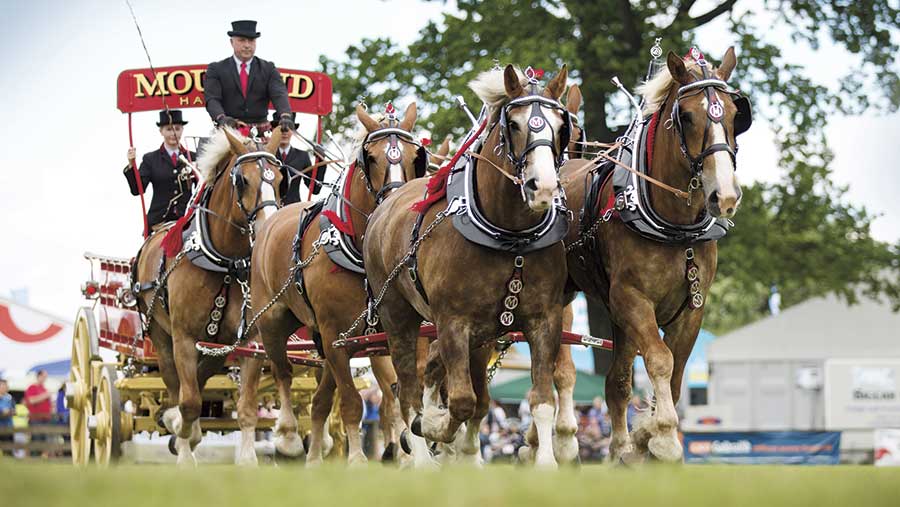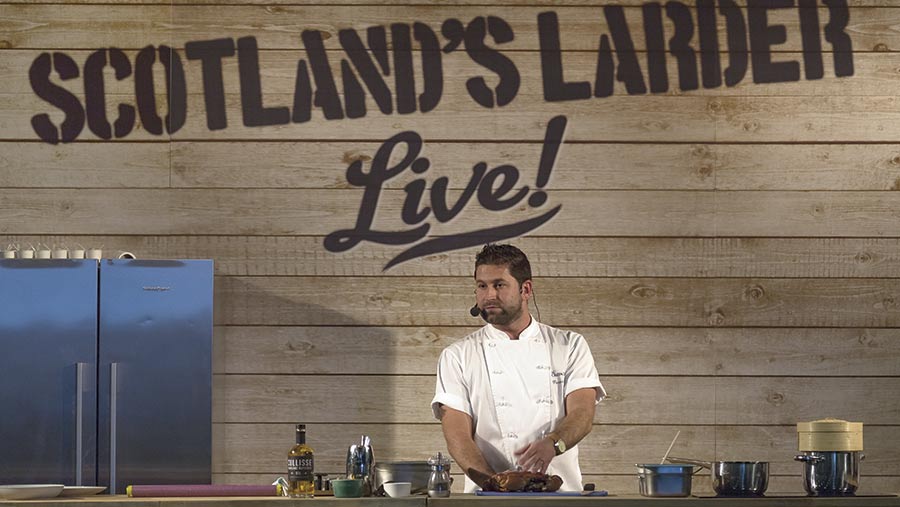The art of managing the Royal Highland Show
Pulling off one of the biggest agricultural shows in the country is no mean feat. Four days of cattle showmanship, sheep handling and show jumping, more than 1,000 exhibitors, 900 competitions, cookery demonstrations and live music and entertainment take some planning.
So a background in event management, which included keeping everything running smoothly at Edinburgh’s Hogmanay, stands Highland Show manager David Jackson in good stead. We ask him about the Royal Highland (21-24 June) and his role in it.
See also: 50 new starter farms to be launched in Scotland
What makes the Royal Highland Show special?
Quite simply, it’s the people. It’s the competitors who bring some of the best animals in the UK to the show in the hope of being crowned a champion.
It’s the food producers from across Scotland, both large-scale and small, that are justifiably proud of what farming in Scotland produces – great food.
The show has the support of a huge number of partners and contractors, who tell us the Highland is special to them, and this comes across in the work they do for us.
All this energy, commitment and passion ensures that visitors, no matter what they are interested in, experience the best of farming, food and rural life.

© Catherine MacGregor
What are you most looking forward to at the 2018 event?
Obviously, I want things to run as smoothly as possible. It matters to me that everyone who comes through the gates has an enjoyable experience.
Mostly, I’m pulled in a hundred different directions in the lead-up to the show and, of course, during the event itself.
I love meeting the exhibitors and competitors, and do my best to have a chat with as many as possible. However, I’ll definitely make it a priority to see the Heavy Horse Turnouts; I’m always in awe of these magnificent animals hitched in teams of twos, threes, fours and, most impressively, sixes.
The Highland is fast becoming renowned for the wide range of quality, locally produced food on offer, which is why I will inevitably end up a few pounds heavier once the show draws to a close.

You joined the RHASS in 2013 – what’s the biggest single thing you have changed about the show during your time at the helm?
The show had been in really good hands and was very successful before I arrived and, once I met the team, I could see why. Their passion and commitment is incredible.
Over the past four years, we have worked hard to ensure that both the regular visitors and the newcomers have an optimal experience.
We say the show offers the best of farming, food and rural life, and I think this phrase has resonated with the farming and rural communities, as well as with people from more urban areas.
This clarification, the constant improvements and the commitment of everyone involved have all contributed to an increase in visitor numbers by about 25,000 over the past four years.
I think the biggest difference now is that we have a constant feedback loop — we are not a static show, we are monitoring what works, tweaking where necessary, making larger changes if needed, and evolving year on year.

What attributes do you need to be a good show manager?
Diplomacy and the ability to remain calm at all times – I achieve this 99% of the time!
The show obviously takes a lot of planning, a lot of energy, and you can only throw yourself into something wholeheartedly if you have a genuine love for it, and I do.
The ability to develop strong working relationships is key. The show has a number of stakeholders who have expectations, and it is my responsibility to ensure those expectations are always met and, if possible, exceeded.
Also, I’m very fortunate to have a great team around me, and a supportive family.
I’ve come to realise that I have acquired nuggets of information about a wide number of subjects over the years; this, combined with my team members’ genuine passion and in-depth knowledge of their respective areas, is probably key to my own success in the role.
Across the UK, why do some of the smaller shows struggle?
This is a complex question that has no single or simple answer. Much, of course, depends on your definition of success.
We know from research we have conducted that about half-a-million people visit agricultural shows each year, so there is no shortage of visitors.
Local shows are valued enormously by organisers, competitors, exhibitors and visitors alike, but the formula for financial viability is different for each event.
In response to the situation, the Highland used its position to bring the sector together to create the Scottish Shows’ Forum, where organisers are encouraged to offer each other support, share experiences and examine what works. Now in its third year, it’s a valuable resource for local shows.
In a previous role, you managed Edinburgh’s Winter Festivals, including the world-renowned Hogmanay celebrations. That must have been quite an experience?
Many of the skills I learned in that and previous roles have been valuable in my current position. However, our Scottish weather tends to be kinder to us in June than it is in December.
I still deal with many of the same organisations I dealt with back then: the police and blue light services, Events Scotland, City of Edinburgh Council, Royal Bank of Scotland and others. Those relationships have developed, and we have each gained a deeper understanding of the pressures we are all dealing with.
Put simply, safety is always paramount, communication is key to that, and everything is underpinned by a robust plan that should be invisible to our visitors, but their safety and enjoyment depends upon it. That is as true on an icy winter’s night as it is on a hot summer day.
The show has expanded its non-farming aspects — is there a danger it will lose its core audience?
Our feedback shows the developments and improvements we have made to the show augment and support its core principles. The demographic of our visitors has altered, but it still retains its core audience.
Forty percent of our visitors are from rural backgrounds, and that has actually increased from 32% in 2014.
How will the show be different in 2018 to 2017?
All the elements that people love about the Highland will remain, but there will also be new livestock classes, new exhibitors and displays.
Visitors will be glad to hear that, after liaising with many transport providers, we have an integrated public transport system, which will make it easier to get here by bus, rail, tram, train and coach.
We are also proud to announce that the President’s Initiative has a new focus, offering valuable employment opportunities for young people.
We are constantly developing and improving the show. All year, the focus is: “How can next year be even better?” Visitors should keep an eye on our social media and website for news.
